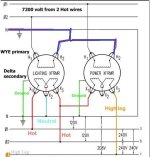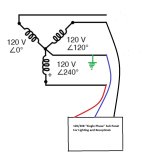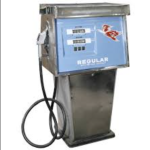winnie
Senior Member
- Location
- Springfield, MA, USA
- Occupation
- Electric motor research
In my mind, there is one major difference between a grounded neutral conductor and a grounded phase conductor on a large system:
In general, when the system is maximally loaded, the current on the grounded neutral will be at a minimum. In general, when the system is maximally loaded, the current on a grounded phase conductor will be at a maximum.
In both cases the potential of the unbroken grounded conductor is near ground potential. And in both cases opening the grounded conductor will cause grief unless you've also opened the hot conductors. In general I think a grounded phase conductor is more alike than different from a grounded neutral, but they do have different flavors in terms of expected operating current.
In general, when the system is maximally loaded, the current on the grounded neutral will be at a minimum. In general, when the system is maximally loaded, the current on a grounded phase conductor will be at a maximum.
In both cases the potential of the unbroken grounded conductor is near ground potential. And in both cases opening the grounded conductor will cause grief unless you've also opened the hot conductors. In general I think a grounded phase conductor is more alike than different from a grounded neutral, but they do have different flavors in terms of expected operating current.







